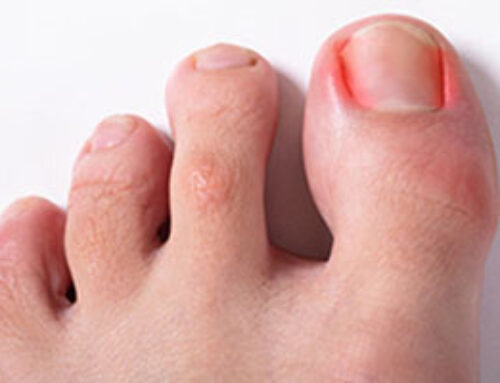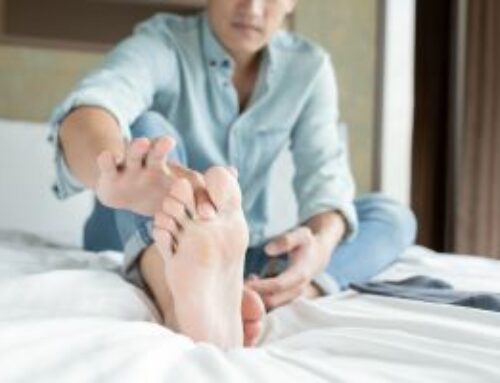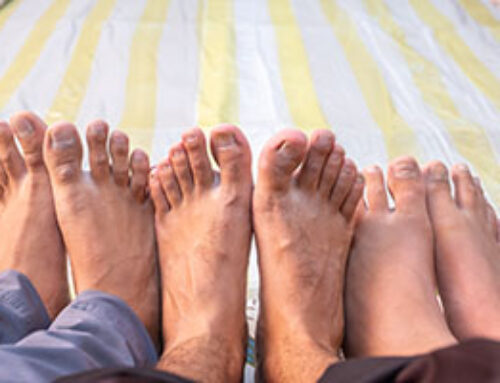Have you been prepping for the cold weather? Maybe you filled up the gas in your tank, covered your outdoor facets, or even made sure you had salt on hand to help melt ice. But have you taken time to prepare your body for winter? People with diabetes must stay diligent with their care to avoid dangerous diabetic complications, especially in the winter. Don’t worry, the specialists at MTFAS are here to help. Read on to discover our top 12 tips for winter diabetic footcare.
Why must people with diabetes take care of their feet?
People with diabetes are more likely to have foot problems than people without. This is because diabetic individuals have prolonged periods of high blood sugar levels, leading to nerve damage and poor circulation in the limbs. This damage can make it hard for you to recognize that your feet are cold, dry, or even itchy. In turn, diabetics succumb to the effects of cold-weather threats such as frostbite, chilblains, and heal fissures easier than someone who does not have diabetes. So, how can you avoid these effects? Keep our 12 tips in mind.
12 Tips for Winter Diabetic Footcare
1. Inspect Your Feet Daily
Daily foot checks are crucial when you suffer from diabetes. Should you find any scraps, ulcers, or wounds, it is best to see a specialist. Prolonged infections in one’s feet can lead to amputation.
2. Keep Your Feet Dry
When you get caught in the rain or snow, your feet can stay wet for extended periods causing bacteria to flourish between your toes or on your feet, leading to infections. When it is damp or cold outside, we suggest that you make a plan to remove your shoes and socks as soon as you get home, then towel dries your feet, paying close attention to the spots between your toes. After drying your feet, put on a fresh, dry pair of socks to protect your feet from hazards.
3. Moisturize Your Feet
Moisturizing your feet is a tricky topic to discuss, as though you do not want damp feet, and you don’t want dry skin to plague you either. In turn, we recommend using a moisturizer daily to keep dry skin from itching and cracking. However, to take optimum care of your diabetic feet, it’s essential not to moisturize between your toes as that space is airtight and can cause tissue breakdown and the potential for infection.
4. Avoid Direct Heat to Your Feet
Ensuring that they keep their feet away from that area is the safest way for patients with diabetes to minimize dryness and a chance of burning their feet. You see, diabetes can cause nerve damage which makes it difficult for diabetic patients to feel that their feet are in the face burning as opposed to just getting warm. This could mean that a patient ends up with second or third-degree burns on the bottom of their feet without them initially aware.
5. Pay Attention to How Your Shoes Fit
Finding the best winter footwear can be a tedious process, but a person with diabetes must consider it. Calluses, blisters, bunions, hammertoes, and other foot conditions can develop when shoes don’t fit correctly. To find shoes that fit correctly, it’s essential to have your feet measured annually. Feet change over time, so getting your feet measured is critical to finding shoes that fit well.
6. Wear Appropriate Socks
When searching for diabetic-friendly socks, search for:
- Dry-wicking socks are the key to keeping your feet safe and cozy during cooler temperatures.
- No Seams because socks made without seams help reduce rubbing and minimize the risk of blisters that can cause ulcers to develop.
- There is no top elastic in socks as they cut off circulation and restrict blood flow to the feet.
7. Remove Wet Socks and Shoes Immediately
When skin gets moist, it breaks down, which can lead to infection. You can prevent this by thoroughly washing your feet and immediately removing wet or sweaty socks or shoes.
8. Trim Your Toenails
It is imperative to trim your toenails straight across to avoid the likelihood of ingrown toenails. Please know that at Metro Tulsa Foot and Ankle Specialists, we are happy to help our patients cut their toenails to prevent the risk of infection.
9. Quit Smoking
The dangers of Smoking run from your head to your feet. The chemicals in cigarette smoke work to damage and constrict your blood vessels, which leads to your feet being deprived of nutrient and oxygen-rich blood.
10. Engage in Light Exercise
While everyone can benefit from exercise, individuals with diabetes will find incredible benefits. Just remember, exercise is not a one-size-fits-all type of situation. Some aerobic programs include bouncing or jumping, which may not be suitable for your feet, especially if you struggle with neuropathy. The specialists at Metro Tulsa suggest programs that involve walking or swimming that minimize the amount of pressure placed on your feet.
11. Control Your Blood Sugar
Individuals with diabetes are prone to developing foot problems due to prolonged high blood sugar levels. Nerve damage and poor circulation can lead to nonhealing wounds at risk of amputation.
For more information on preventing or delaying nerve damage, visit the American Diabetes Association.
12. Schedule Regular Foot Exams
Year-round podiatrist visits are crucial for individuals who have diabetes, especially in the winter months, as diabetes makes you feel less sensitive. When your feet are less sensitive, you could step in a puddle and not even realize that your feet are wet, leading to an increase in risk for an infection. Even a harmless callus could become an issue if you don’t deal with them.
Delayed treatment of foot pain can lead to complications, chronic pain, disability, and even arthritis of the affected foot.
Subscribe to stay up-to-date on news and tips from us.




